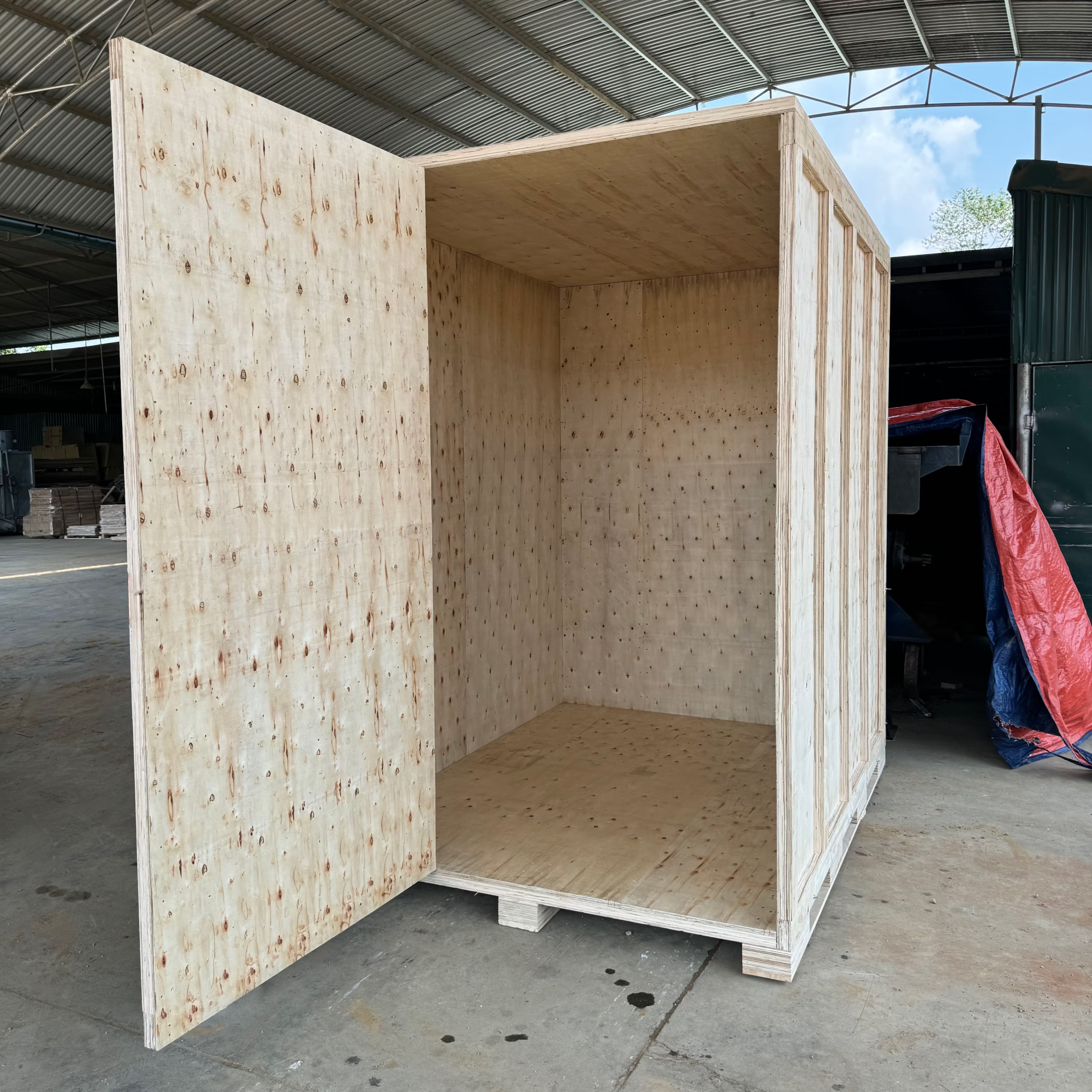Insight
Plywood in the Packaging Industry
In the evolving landscape of logistics and global trade, packaging plays a pivotal role in ensuring that goods are protected, handled efficiently, and presented professionally. Among various packaging materials, plywood has earned a strong reputation as a high-performance solution for industrial and heavy-duty applications. Thanks to its strength, rigidity, and customizability, plywood is widely used to manufacture crates, pallets, boxes, and specialized protective packaging.
This article explores the significance of plywood in the packaging industry, its advantages, applications, challenges, and future outlook.
1. Material Properties of Plywood in Packaging
Plywood is an engineered wood product composed of multiple layers (veneers) of wood bonded together, usually with each layer’s grain direction perpendicular to the adjacent one. This cross-laminated structure results in:
- High strength-to-weight ratio: It is lighter than metal or hardwoods but offers excellent structural integrity.
- Dimensional stability: It resists warping, twisting, and splitting, even under changing humidity or temperature conditions.
- Shock resistance: It can absorb impact during shipping, protecting delicate goods.
- Customization: Panels can be easily cut, drilled, and assembled into complex structures, making plywood a favorite for tailored packaging solutions.
These properties make plywood ideal for protecting goods in transit, particularly high-value, fragile, or bulky items.

2. Key Applications in the Packaging Sector
a. Export and Industrial Crating
Plywood is extensively used for export crates—especially in the automotive, electronics, machinery, medical equipment, and defense sectors. Crates can be built to custom sizes to accommodate odd-shaped or heavy goods. Reinforced crates can even hold several tons of weight.
b. Foldable and Collapsible Boxes
For cost-effective shipping, many companies now use knock-down plywood boxes, which can be collapsed flat and assembled quickly at the destination. These help reduce freight volume and return shipping costs, especially in closed-loop logistics.
c. Pallet Bases and Skids
Plywood is used to produce durable pallet decks or skid platforms that support heavier goods. They offer a smoother surface than traditional slatted pallets, reducing damage to products and improving stackability.
d. Military and Aerospace Packaging
Because of its durability and ability to withstand extreme environments, plywood is used for military-grade containers, ammunition boxes, and aerospace component packaging. Often, these crates are designed to be reusable and compliant with international phytosanitary standards (e.g., ISPM 15).
e. High-End Custom Packaging
In luxury sectors (e.g., fine instruments, art, electronics), veneered or branded plywood boxes are used to deliver not only protection but also a premium unboxing experience.

3. Advantages of Using Plywood for Packaging
Strength and Protection
Plywood can carry significant loads and protect contents from external shocks, compression, and vibrations—making it a superior option for valuable or fragile items.
Customizability
It can be tailored to fit any shape, integrated with foam inserts, hinges, locking systems, and branding elements. CNC routing further enhances precision in mass production.
ISPM 15 Compliance
Plywood, especially heat-treated or chemically treated variants, complies with ISPM 15 phytosanitary standards for international shipping. Unlike solid wood, most plywood is considered “processed” and often exempt from fumigation.
Durability and Reusability
Compared to cardboard or plastic, plywood packaging can be reused multiple times, especially in intra-company or returnable systems.
Sustainability
Modern plywood production often uses FSC-certified wood sources, and panels can be reused or recycled. This aligns with corporate sustainability goals and circular economy principles.
4. Challenges and Limitations
While plywood packaging has many strengths, some challenges exist:
- Weight and Cost: Compared to corrugated cardboard, plywood is heavier and more expensive. For non-fragile or lightweight goods, it may be economically inefficient.
- Moisture Sensitivity: Standard plywood can delaminate when exposed to water or humidity. However, marine-grade or film-faced plywood can address this issue.
- Handling and Machinery: Plywood crates often require forklifts or cranes for movement, making them unsuitable for small-scale logistics or e-commerce.
- Limited Flexibility: Unlike plastics or foams, plywood lacks elasticity, which limits its use in packaging that requires deformation or wrapping.
5. Industry Trends and Innovations
Eco-Friendly Alternatives
There is a growing demand for lightweight plywood substitutes or hybrid packaging combining plywood with corrugated fiberboard, recycled plastics, or honeycomb panels for a reduced carbon footprint.
Smart Packaging Integration
Some high-end plywood packaging integrates RFID, QR codes, or GPS trackers for traceability, especially in the pharma, defense, and electronics sectors.
Automation and CNC Fabrication
With the rise of CNC machines and laser cutters, plywood crates can now be pre-engineered, modular, and mass-produced with precise tolerances and minimal labor.
Global Export Markets
Countries like Vietnam, China, Poland, and Indonesia are leading exporters of plywood packaging, especially to North America, Europe, and Japan, where ISPM 15 compliance is essential.
6. Market Demand and Outlook
According to multiple industry reports, the global industrial packaging market is projected to reach USD 75–100 billion by 2030, with plywood maintaining a stable share of about 8–10%. The plywood packaging segment alone is estimated at USD 6–8 billion in 2024, with expected growth of 4–5% CAGR, driven by:
- Increasing exports of industrial machinery and electronics.
- Rising demand for reusable transit packaging.
- Regulations favoring eco-friendly and recyclable materials.
Vietnam, for example, has grown into a key player, supplying foldable plywood boxes and custom crates to Korean, Japanese, and EU manufacturers. The combination of affordable labor, strategic location, and improved manufacturing standards makes it a preferred sourcing hub.









